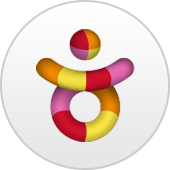- Log in
-
- Sydney Overseas Office
- London Overseas Office
- Toronto Overseas Office
- Los Angeles Overseas Office
- New York Overseas Office
- Ulaanbaatar Overseas Office
- Dubai Overseas Office
- New Delhi Overseas Office
- Manila Overseas Office
- Jakarta Overseas Office
- Hanoi Overseas Office
- Kuala Lumpur Overseas Office
- Singapore Overseas Office
- Bangkok Overseas Office
- Map
- Sydney Overseas Office
- London Overseas Office
- Toronto Overseas Office
- Los Angeles Overseas Office
- New York Overseas Office
- Ulaanbaatar Overseas Office
- Dubai Overseas Office
- New Delhi Overseas Office
- Manila Overseas Office
- Jakarta Overseas Office
- Hanoi Overseas Office
- Kuala Lumpur Overseas Office
- Singapore Overseas Office
- Bangkok Overseas Office
Contents View
-
-
-
Train
-
03/31/2023
-
54.3K
0
2
-
-
train_station
train
-
-
Trains, the fastest and the most comfortable means of transportation
The excellence of trains in Korea is already well-known around the world. There is such a wide variety from the high-speed trains like KTX and SRT to conventional trains like ITX-Cheongchun, ITX-Saemaeul, Mugunghwa, and last but not least, tourist trains. Trains in Korea are equipped with pleasant and comfortable cabins as well as friendly multilingual guides for a safe and convenient travel across the country. In addition, unique-themed tourist trains allow travelers to experience Korea in a special and comfortable manner.
 【 KTX, a high-speed train in Korea (Credit: Getty Image Bank) 】
【 KTX, a high-speed train in Korea (Credit: Getty Image Bank) 】✔️ See Korea Railroad Route Map
1. Major Routes
- Gyeongbu Line: This 447.1-kilometer-long route connects Seoul and Busan and welcomes the greatest number of passengers among all routes. It is a popular route because it allows travelers to visit Busan, Korea’s second largest city, in a fast, convenient fashion. It also allows easy access to culture-rich cities such as Daejeon and Gyeongju so it is a recommended route for travelers who are planning a short but solid trip.
- Honam Line: This 252.5-kilometer-long route runs from Seodaejeon to Mokpo and is an important route that connects Seoul and regions of Jeonbuk-do and Jeollanam-do, collectively referred to as Jeolla-do or Honam region. Its major stops include Iksan, Jeongeup, Gwangju-Songjeong, Naju and Mokpo. Among the destinations, Jeongeup Station is especially famous in fall as many hikers visit Naejangsan Mountain to see beautiful autumn fall foliage. Mokpo, one of the three major ports in the Honam region, is also a popular destination among tourists.
- Gangneung Line: This 237.1-kilometer-long line runs from Cheongnyangni Station in Seoul all the way to Gangneung Station, conveniently taking passengers to major attractions in the East Sea. Its major stops include Yangpyeong, Seowonju, Pyeongchang and Gangneung. This route is recommended for those who wish to enjoy all four seasons of the beautiful sea on the East Coast.
Tip Major train stations- Seoul Station: The starting point of Gyeongbu Line and Gangneung Line. It is also the major transport hub of Korea where Seoul Subway Lines 1, 4, Gyeongui-Jungang Line, and AREX pass by.
- Yongsan Station: This station is a part of the Gyeongbu Line and the starting point of Honam Line that connects Seoul and Mokpo.
- Busan Station: Busan Station is the starting and destination point of Gyeongbu Line. It is the central station of the city of Busan and a symbolic transport hub that represents the city.
- Daejeon Station: Daejeon Station is a part of both Gyeongbu Line and Chungbuk Line. It is the central station of the city of Daejeon and one of the major train stations in Korea.
2. Types of Trains
KTX (Korea Train eXpress): High-speed express train that runs at a maximum speed of 300 km/h. It departs from Seoul Station, Yongsan Station and Cheongnyangni Station, and has routes that connect to the cities of Busan, Mokpo, and other cities.
SRT (Super Rapid Train): High-speed express train with a maximum speed of 300 km/h that leaves Suseo Station and heads to Busan or Mokpo.
ITX-Cheongchun: Train with a maximum speed of 180 km/h that runs from Yongsan Station to Chuncheon.
Saemaeul Train/ITX-Saemaeul: A premium-class conventional train that departs from Seoul Station (Gyeongbu Line), Yongsan Station (Honam Line) and Cheongnyangni Station (Andong-bound).
Mugunghwa Train: A conventional train that departs from Seoul Station (Gyeongbu Line), Yongsan Station (Honam Line) and Cheongnyangni Station (Donghae-bound). It makes stops at small stations where KTX and premium trains bypass.
Tourist Trains: Tourist trains are available in various themes such as a gugak & wine-themed train and trains that takes passengers to the mountains, seas and marketplaces around the country.
- Websites
KORAIL: www.letskorail.com (Korean, English, Chinese, Japanese)
* For booking KTX, conventional trains, and tourist trains - SRT: etk.srail.kr (Korean, English, Chinese, Japanese)
* For booking SRT
3. How to use Trains in Korea
You can purchase train tickets at a ticket office, KORAIL website, KORAILTalk (app), ticketing kiosk, SRT website or app, NAVER Train Booking, or KakaoT. Tickets can usually be purchased starting from one month prior at 07:00 to 20 minutes before, or in the case of apps even right before, the departure time;. If you buy tickets online, you can also choose the desired seats in advance by clicking the “Reserve Seat” button. Some trains have seats positioned in two directions, forward and backward, which you can choose depending on your preference and situation. KTX and SRT amenities include restrooms, nursing rooms, diaper changing tables, and vending machines, and almost all trains offer free Wi-Fi connection (connection may be unstable depending on circumstances). For questions related to booking tickets, contact the KORAIL Customer Center (+82-1599-7777, English only) for a friendly consultation (08:00-20:00 daily).Tip Save money with KORAIL Pass!Korail Pass is a train pass exclusively for foreigners. Korail Pass is divided into a 3- and 5-day consecutive pass, flexible passes for a 2- and 4-day period within 10 days of purchase, and a Saver pass for groups of two to five, which are a bit cheaper. Once you purchase a pass, you are given the unlimited use of standard cabins during the period. You can reserve seats up to twice a day and also book a first class seat by paying only 50% of the original first class seat fare.
* SRT, subways and temporary tourist trains do not apply to Korail PassKORAIL Pass: www.letskorail.com (English, Japanese, Chinese)
* This page was last updated on September 19, 2025, and therefore the information may differ from what is presented here.
* 1330 Korea Travel Hotline: +82-2-1330 (Korean, English, Japanese, Chinese, Russian, Vietnamese, Thai, Malay)





